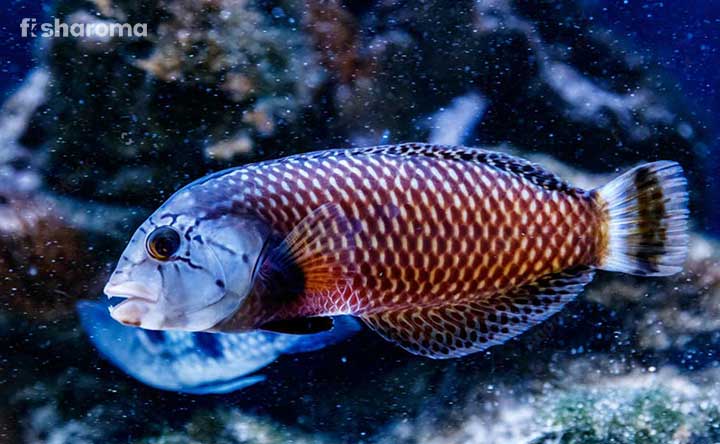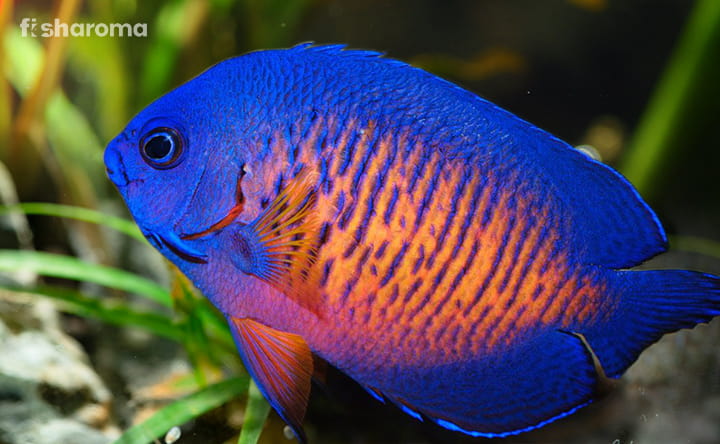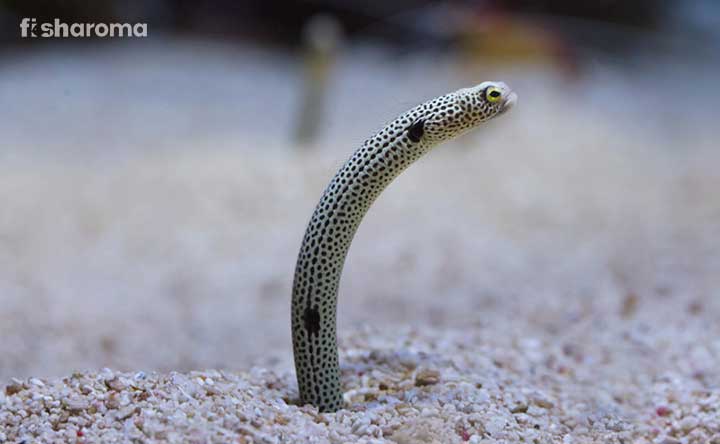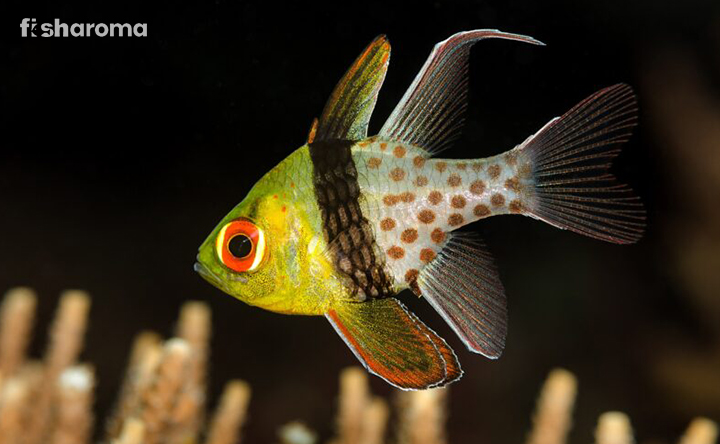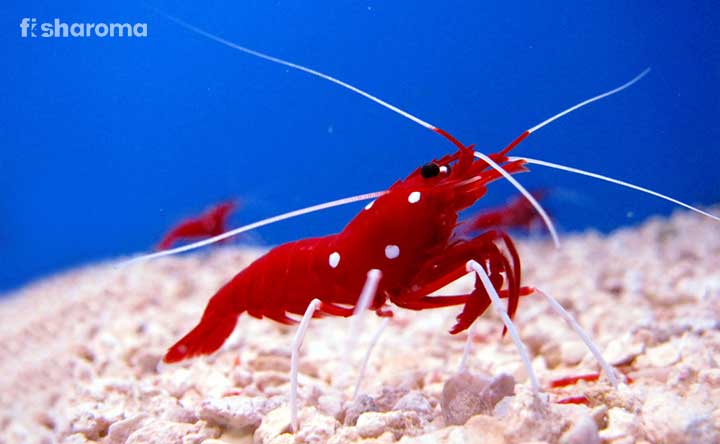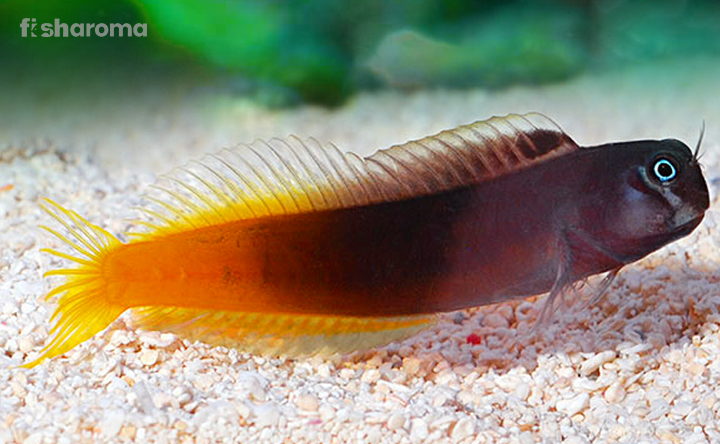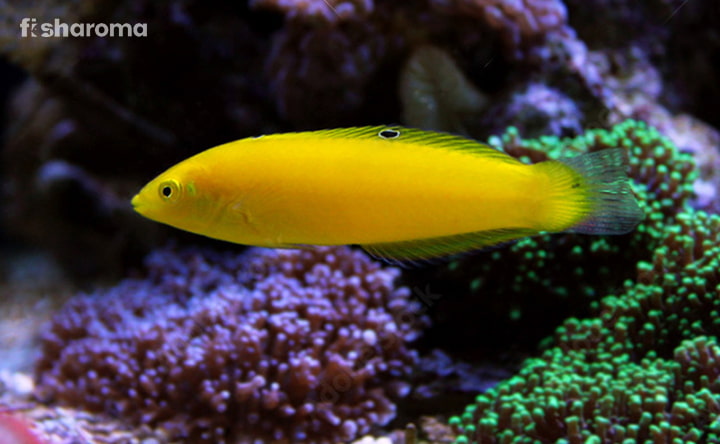Diamond Goby Care Sheet And A Complete Guide For New Beginners
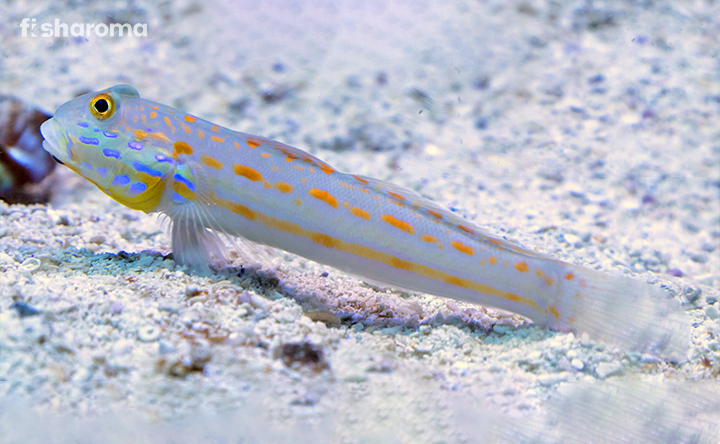
Diamond Goby is a fish that you will find in saltwater only. It is an esteemed member of a Goby family, where all the species share similar attributes. When it comes to petting one fish in your home, there are a lot of conditions that you need to fulfill. However, to your surprise, they are not fussy and the thriving conditions that they need are pretty basic.
After having known about the species, being so easy to care for, the next thing that comes to mind is its appearance and its size. Let us start with a proper introduction to the spectacular Diamond Goby because this deserves even more appreciation. You will eventually understand that and we suggest you should read on.
Key Specification Of Diamond Goby
Following is some quick information about the saltwater fish beautifully complementing the Goby clan.
| Also Known As | Maiden Goby, Orange Dashed Goby, and Orange Spotted Sleeper Goby, and Diamond Watchman Goby |
| Origin | India and the Pacific Ocean |
| Size | Around 6 inches |
| Diet | Carnivorous |
| Colour | White and orange |
| Lifespan | 5-8 years |
| Temperament | Peaceloving |
| Reproduction | Egg-layers |
| Maintenance Requirements | Moderate |
| Tank Size | 30-55 gallons |
Overview
The reef-friendly Goby fish, the Valenciennea puellaris, is a bottom-dwelling saltwater fish. This fish has a calm temperament and it stays busy with scavenging proclivities. Not a big hassle to pet, this fish can stay with other fish without such problems. Diamond Gobies are carnivorous by nature and in your home aquarium, you need to provide exactly that kind of diet for them to survive. Moreover, you will be amazed to see their constant sand-shifting nature.
Origin And Habitat Of Diamond Goby
The Diamond Goby inhabits the Indian and Pacific Oceans mostly but they are also common in Samoa, the Red Sea along with Great Barrier Reef.
Their natural habitat consists of being the reef-surrounded sandy sea bed. The depth of water where they reside could range from 6 feet to 100 feet. They live in burrows in and around lagoons.
Appearance Of Diamond Goby
It has a typical Goby-like feature, rather extremely similar to other Gobies like Yellow Watchman Goby and other members of their own tribe. While the mouth and the middle part of the body is wide, it gradually has a tapered ending that meets the tail. The Diamond Goby uses its pectoral fins like its hands, especially when it starts digging the sand around its territory. The anal and caudal fins are soft, and so is their dorsal fins, but those are spiny.
Size
The size of the fish is mostly around 6 inches, but it can often become 7 inches as well. The males are bigger in their size than the females ones. There are some the specimens who have managed to grow till they are 8 inches, but those are extremely rare and should be considered as exceptions only.
Colour
The body has a completely white base with some orange dots all over the body. Some has blue tinges near the underside of their mouth. The eyes are dark with a bright yellow outer line.
Behaviour Of Diamond Goby
The fish is actually a gentle one and it will entertain you with its digging nature. It is a continuous process where the fish is always looking for food by scavenging the sand. This is a unique yet effective thing for your tank because this way the sand always remains clean from any food leftover and other things. This trait is the instinctive behaviour of Diamond Goby because it can’t do without it. Similarly, this fish lives in covered or any caves likes places inside the aquarium. It digs and makes burrows inside the sand and stays there most of the time. The open cave can be even covered by the fish befire it retires for the day. It is a completely reef-safe fish that can be placed inside a reef tank, inside your home.
Lifespan
The lifespan of any pet fish depends on the treatment that it gets from the owner. It includes dietary routine, hygiene of the tank, and the suitability 2 of the tank mates. If all conditions are maintained well, then the fish can live for 5-8 years. Some can live for 10 years as well but those are their standard life duration. However, if the above-mentioned conditions are not fulfilled, then life can be cut short.
Diet Of Diamond Goby
The fish is a carnivorous one and it is content with all the microorganisms that it can get from digging the sand. Apart from this, in the wild, Diamond Goby easts copepods and zooplankton. So in order to mimic the same feeding nature, you have to supply brine shrimps, mysis shrimps, black worms, krills, and bristle shrimps. The fishes will take some to get themselves adjusted to consuming flake or sinking pellet foods, even the frozen foods.
You have to keep close watch if the fish is getting proper food and nourishment or not. The foods should be given in small particles so that the fish can gulp them down without choking on them. Also, if there is more competitive or foodie fish mates inside the same tank, Diamond Goby might be unable to snatch the food, mostly because this Goby is a bottom-dwelling one, so you have to provide food 2-3 times every day.
The ideal way to ensure that your Goby is having sufficient food is to directly spread the food at the bottom of the tank. If the Goby has many tank mates then it is more necessary because otherwise rest of the fishes will consume the fish food. It is suggested to utilize a feeding tube for this purpose of exclusively feeding the Diamond Goby. Over time, the fish will be trained to identify the feeding tube with its mealtime.
Tank Requirements Of Diamond Goby
The saltwater fish needs a comfortable setting so that it can hide and have fun with its sand. Apart from that, its water parameters should be different from a freshwater tank in terms of hardness, pH level, and so many related things. This fish is not a schooling species, nor is it a solitary one. It has the tolerance level to withstand other fishes as long as they are not fighting with the Goby. Let us now concentrate on what kinds of conditions can make a marine tank an ideal home for the Diamond Goby.
Tank Size
With its size and burrowing nature, the fish needs a moderately sized tank that will be deep enough to dig. So, 30- gallon tanks are a good option if you can’t opt for bigger aquariums. However, our suggestion is to go for a 55-gallon tank that will be ideal for a pair or even a single Goby.
Many people keep the fish in a 20-gallon tank with a diameter of around 30X12 inches.
Tank Lid
A tight tank lid is an absolute must because the fish is known to be jumping at occasions. It might seem that since it is a bottom dweller, it can’t go up, but that is sadly not the case. Since it is not possible to be vigilant all the time, you must ensure the tank has a lid. It will, also create an obstruction for the outside dirt and dust that may otherwise pollute your aquarium and change the water equilibrium.
Substrate
The fish is a sand-shifter by nature, so a sand bed is essential. The Goby can forage and search for food within such a smooth substrate. This fish loves to semi-hide itself inside a burrow for which sand is also the preferred option.
Filter
The sand-shifting tendency keeps the bottom well-oxygenated, still a filter is important for the Goby tank.
Ornaments
Live rocks are a must because this fish will not only play with the sand, rather rocks are one of their favorite things to be engaged with. If you want to keep some rock formations with some special theme, then attach them to the substrate so that the Goby can’t move them. Or else, some loose, small, and lightweight rocks can be kept here and there. Corals are often kept in such tanks, but the Goby might cover it with their sandy affair.
Lighting
The fish doesn’t like strong lights, so you will have to attach some marine tank lights that will be ideal for the fish. The colourful rocks and sparkling sands will look breathtaking under the soft light. Nevertheless, the fish will indeed shine like a diamond, justifying its name.
Cleaning Method
The fish tank and its decorative ingredients are meant to be cleaned on a regular basis. Don’t forget to perform a partial water change, and check if anything detrimental pollutants are left inside the tank.
Water Type Of Diamond Goby
Diamond Gobies require certain kinds of water chemistry that would make them thrive. It is their natural setting that has to be emulated inside the tank.
Temperature
The fish, being a marine species, belongs to the warm water zone and it needs 22-26 Degrees Celsius of temperature.
pH Level
The recommended pH range for this fish should be 8.1-8.5.
Hardness
The carbonate hardness of the water should be within a range of 8-12 dKH.
Gravity
The recommended range is from 1.020-1.025.
Compatibility Of Diamond Goby
This peaceful fish can live with other non-aggressive saltwater fishes without any issues. The problem occurs when there is some territorial issue or intimidation from any other fishes.
Suitable Tank Mates
The fish is usually amicable with other tank mates, as long they all have similar traits and don’t clash with each other’s interests.
- Dwarf Angelfish
- Clownfish
- Damsels
- Shrimps
- Neon Gobies
- Cleaner Wrasse
- Lawnmower Blennies
- Foxface Rabbitfish
- Filefish
- Pink Fairy Wrasses
- Marine Bettas
Unsuitable Tank Mates
Violent fishes are not compatible with these gentle Gobies so avoid fighter and aggressive saltwater fishes. Except for its mated counterpart, you shouldn’t keep other Gobies, especially if they are also sand shifters or burrowing all the time.
Breeding Of Diamond Goby
The Diamond Goby, protogynous by nature, is supposed to be monogamous. So, once it mates with a fellow Goby, it will not mate with any other. The fish can also change its gender as per the convenience because it usually has streaks of both genders. But all these situations are spontaneous in nature and whether or not will work out in an aquarium is up to your luck. You will not know without any professional breeders how to make your Goby pair with another one.
Now, suppose you have bought a mated pair, you can see their breeding process. The male Diamond Goby keeps their fertilized eggs inside the sand burrows and guards it unless they hatch. It takes 3-4 days for the young fry to come out completely. The concerning thing is their survival chance is bleak because you never know how to get them adequate nourishment. In captive breeding, it is hence suggested to take some professional help. All they need is some proper food like planktons that will make them grow properly and some supervision, especially when they are in the main community tank. They should stay inside the breeding tank unless they grow and attain maturity.
Diseases Of Diamond Goby
Diamond Goby is might be susceptible to marine velvet disease and that can be prevented if the fish gets a clean environment. Ich is rare but can attack the fish, like any other marine fish health issues. If any anomaly is observed, you must quarantine the fish first and then consult a vet immediately.
Apart from this, keeping the entire aquarium clean is the basic task you need to do so that the fish stays healthy for the longest time, under your vigilance. Just by maintaining everything clean you can avoid so many aquarium fish diseases.
Summary
The marine fish with its sparkling name is a bright fish, entertaining all with its semi-burrowing nature. The inquisitive and alarmed eyes of the fish adds to its beauty. Though breeding is a difficult thing to observe in home aquarium, still the fish never ceases to amuse aquatic lovers. If you have the luck, then you can see how this fish mates for life and stay with its partner. Not only this, you will be rewarded with the shining appearance of the fish, especially when you arrange for marine tank lights.
Other Similar Care Guides
If you think that our saltwater fish care species is limited to this only, then you ate highly mistaken as we have plenty of such marine fish profiles. You will get to know about their care guides as well.
- Pajama Cardinalfish – The colourful fish has a docile temperament and it lives for around 5 years. So, not only will it impress you with a long companionship, but also enchant you with tranquility.
- Yellow Tang – The vivacious yellow fish with a cute lip structure looks marvellous. The Hawaiian fish is a fine addition to any marine aquarium.
- Dragon Wrasse – This fish is a darling of the sea world and one of the most beautiful Wrasse fishes. The lively fish with its two types of appearances, (one during juvenile state and one when the fish is adult) will give you plenty of opportunities to witness the wonder of the sea.

